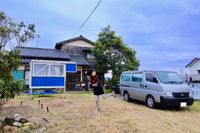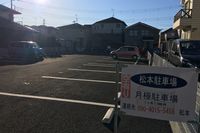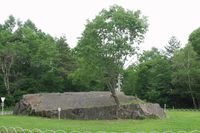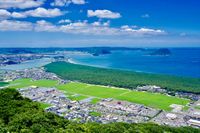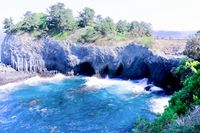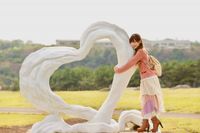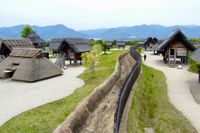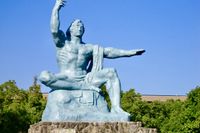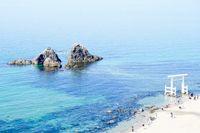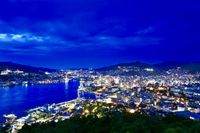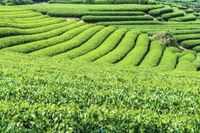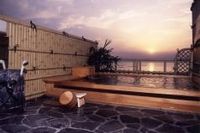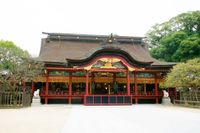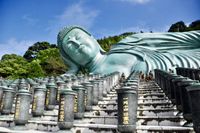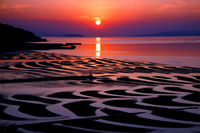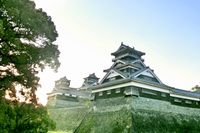Okawa Uchiyama
佐賀県/伊万里市

Description
This is a town known as the "Secret kilin town" from 1675. The Nabeshima clan, inhabitants of the town were the first to master porcelain production, and established the "clan kiln" as well as other technologies to improve the quality of their products, and it was said that steps were taken to ensure that these techniques were not known to others to copy. They maid luxury porcelain products for the Daimyo, Shogunate and imperial court up until 1871, but is still cherished today as a porcelain specialist town where traditional production kilns can still be viewed.
Homepage
Address
Nearby Car Night Spots
Nearby Activities
Ranking Stations
Shin Meishin Suzuka PA (inbound) RV Station Suzuka * With Power!
¥2,200〜
/ per nightMie Yamamotocho, Suzuka-shi
4.4
(123)Nearby Drive Spots
Ureshino Onsen
This is an area with a small hot natural hot spring in Southern Saga prefecture. It has 1900 years of history with several traditional Japanese inns along the Ureshino Rivers, making it one of Kyushu's largest Onsen towns. The Onsen is popular with women due to the water's skin enhancing properties. It also has a special local product known as Ureshino Onsen tofu.
Niji no Matsubara
This is a pine grove in Karatsu bayside, Saga prefecture. With a width of 500 meters and a length of 4.5 km, there are around 1 million pine trees that line the forest, and is a rare sight due to their proximity to a coastal area. During the Edo era(1603-1868), it is believed that these pine trees were purposely planted here to act as a barrier to the coastal winds.
Ouo Shrine
This is a shrine built around 1700. There is a legend that says that an officer who was stranded on Okinoshima island was saved by a large fish, and built Torii gates in the water, which is now commemorates as a protective sea God. At low tide, it is possible to walk through the Torii gates along the sea path, but these are submerged at high tide.
Nanatsugama Caves
This is a row of sea caves that exist side by side along the coast of the northern part of Saga Prefecture. Because it originally had seven sea caves, it was named "Nanatsugama", although in the present day, there are more than seven caves. It is an unexplored area where you can see the mysterious scenery that nature has created.
Cape Hado
This is a cape in the Eastern Matsuura peninsula in the Northern part of Saga prefecture. As the pronunciation of the place name is similar to "haato" (Heart in Japanese), it is also known as a sacred spot for couples, and there is a heart shaped monument to represent this. There are also plentiful facilities for water activities, lodgings and camping, a seaside sand park and a Tsuboyaki area (Tsuboyaki is a method of putting ingredients inside a container and then cooking them while in the container).
Yoshinogari Historical Park
This is the largest ruins area from the Yayoi era (around 500 BC). The biggest characteristic is the collection of relics associated with the defense of the settlement, with about 2.5 km of outer bunkers and fences. In addition, as from excavation survey findings, pit dwellings, tall floor warehouses, observation towers, tombs, bronze ware, copper mirrors and the like have been discovered over an area of 36 hectares, making it a very important historical site which tells the story of the lives of people in ancient times.
Nagasaki Peace Park
This is the place where nuclear weapons were dropped in the Pacific War in 1945, three days after Hiroshima bombing. The bombing on August 9th destroyed an area of around 6.7 million square meters, with about 74,000 people dead. A park was built in 1950 for wishes of peace. In the center is a "Peace Prayer statue" that symbolizes the love of God and the mercy of Buddha, with the right hand representing the threat of the atomic bomb, the left hand representing peace, and the closed eyes praying for the victims' souls.
Couple Rock(Sakurai Futamigaura)
This is a collection of sacred rocks in Futamigaura, the western part of Fukuoka prefecture. The rocks are sacred forms from the Sakurai Shrine, and each "Male" rock is from Izanagi (a legendary male God) and the "female" rocks are from Izanami (a legendary female God). The views of the sunset that peeks between the rocks is a sight to behold, and cherished by many visitors that come here.
Mount Inasa
This is a 333 meter high mountain in Nagasaki city. There is an observation deck which offers splendid views of Nagasaki port below, but is mainly known as one of the top 3 night view spots in Japan. In fact, it is known as one of the top 3 night view spots in the world, along with places in Monaco and Hong Kong.
Yame Chuo Tea Garden
This is a tea field situated in Yame city. It is the 6th largest tea producer in Japan, and makes up 3% of Japan's tea. Tea leaves have been grown here since the Sengoku era(1467-1600), and has spread in prominence and popularity since them.
Unzen Onsen
This is a hot spring in Unzen city, built in 701 AD. From the Edo era(1603-1868) up until the Meiji era(1868-1912), it developed as a resort area for many foreigners who visited Nagasaki, with Sea Bolt being one of the first. The 30 Onsen have the smell of the naturally occurring sulphur and smoke, known as the "Unzen hell". It also has a sad history of being witness to Christian martyrdom.
Dazaifu Tenmangu Shrine
This is a temple built in 919 AD by Fujiwara Nakahira. The great heavenly God Sugawara Michizane is enshrined in this temple, and there is splendid Shinto architecture above the grave of this God. It is a popular site of reverence for students, as this temple God is known as the deity for learning and study, and along with the Kitano Tenmangu Shrine in Kyoto, this is the main head temple of the Tenmangu shrine group, which consists of around 12,000 shrines. The area is famous for Tobi Ume plums, and each year, a priestess will donate a plum tree to the country, and is also used for plum wine.
Hashima Island
世界遺産に登録されている、長崎市にある無人島です。江戸時代から海底炭鉱によって栄え、昭和時代には東京以上の人口密度を有する島でした。1974年に閉山してからは無人島となり、廃墟ブームの盛り上がりとともに多くの観光客を引き寄せています。
Nanzoin Temple
This is a Shingon sect main head temple built in 1899, as a temple from Mount Koya. Nanzoin temple had provided Burmese and Nepalese children with medical aid, milk and stationery over the years, and as a return gift, the Myanmar national buddhist institution gifted various buddhist relics, known as Sarira. In 1995, a 41 meter reclining buddha statue was built to enshrine these buddhist relics. Other areas to look out for which are relics of its history are the buddha footprint, 500 arhats and the Seven Deities of Good Fortune tunnels.
Okoshiki Beach
This is a coastal area in the western part of Kumamoto prefecture. The name comes from a 2000 year old legend where an emperor on an expedition to Kyushu carrying an Omikoshi (portable shrine) is said to have stopped and stared in enchantment at the coastline. The beach has a beautiful coastline punctuated with the waves and wind.
Kumamoto Castle
This is one of Japan's three most famous castles, built in 1607 by Kato Kiyomasa. The castle is famous for being the place where Miyamoto Musashi, the most famous Japanese sword warrior and author of the martial art "book of five rings" spent his later years, as well as being the scene to the Southwestern War, the final civil war in Japanese history. The main hall known as the "Shokun no Ma" represents the grandiose and opulent Daimyo culture. The castle was damaged by the Kumamoto earthquake of 2016, but has been restored.

